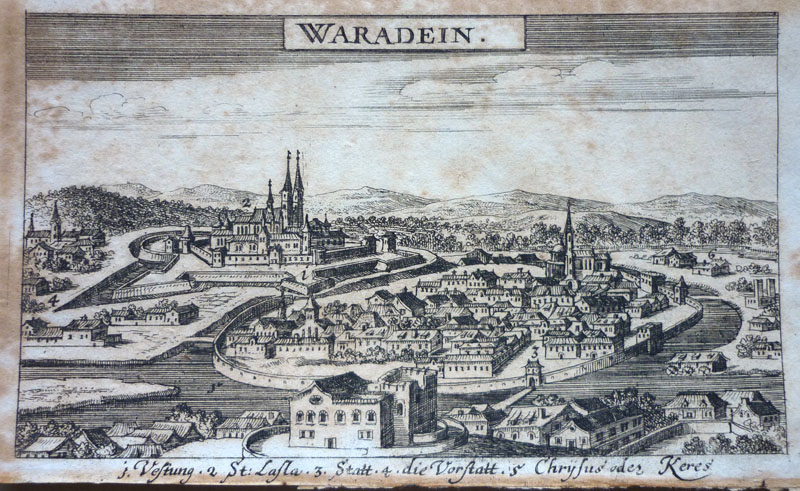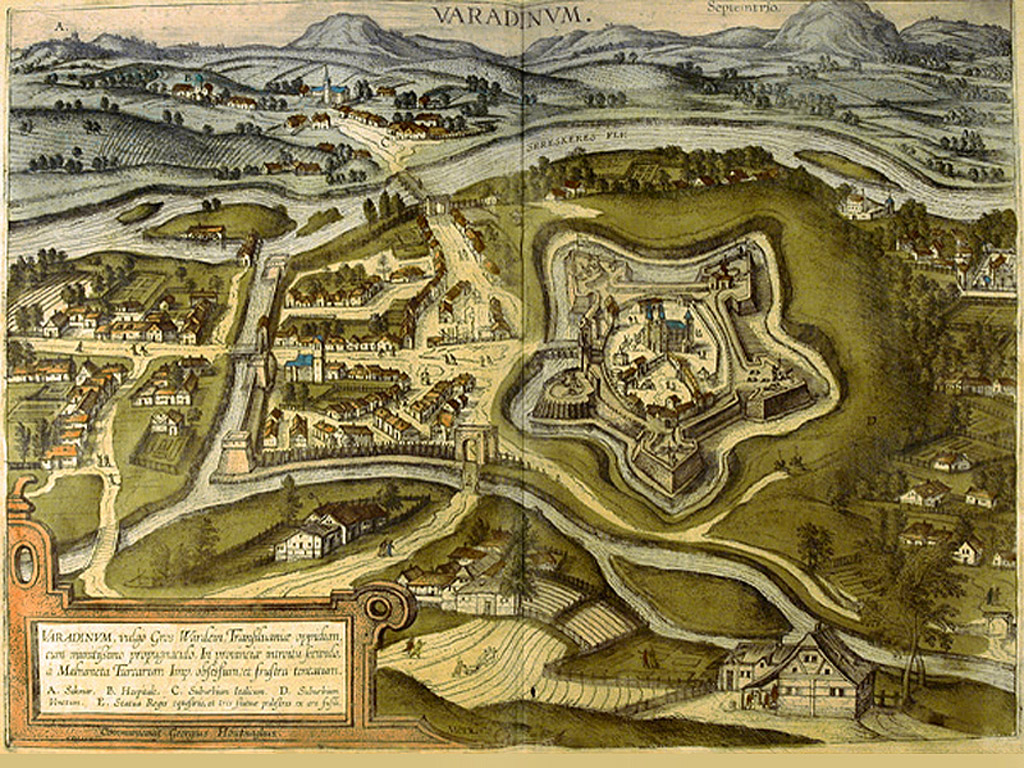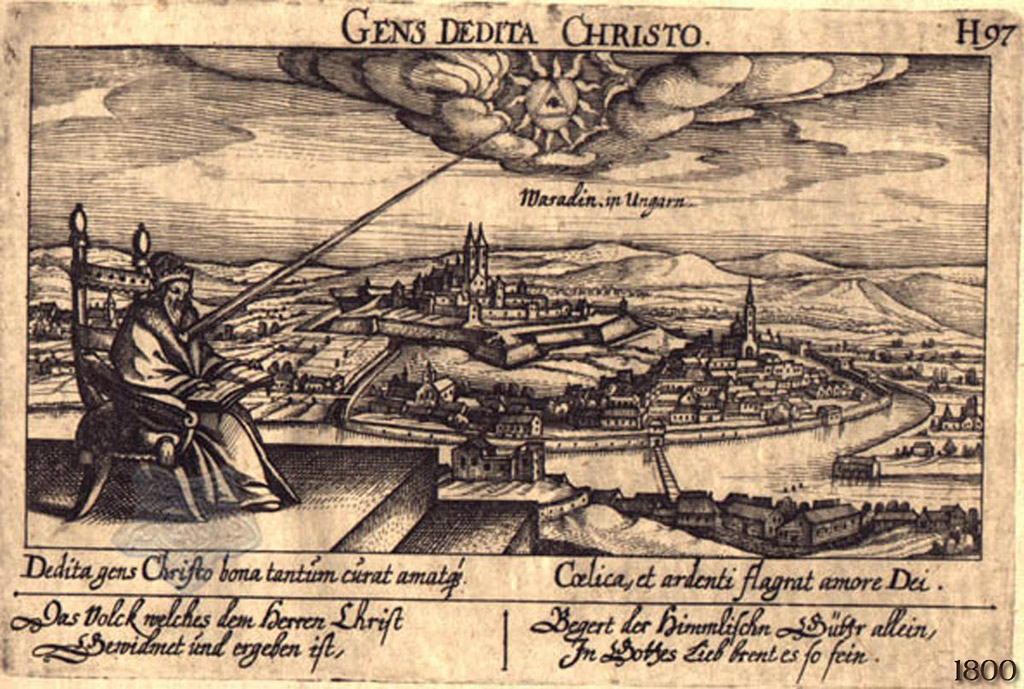Soon the city of Oradea will become a part of the history of the HMB World Championship Battle of the Nations. The city has an amazing and rich history. Telling Oradea’s whole story is overwhelming work because, in some sources, references go to the Neolithic! Today we will tell you only a part, but exactly the one that most closely matches the spirit of the Battle of the Nations. Welcome to medieval Oradea!

As we have already mentioned, recent archaeological finds in and around the city suggest that there is evidence of more or less continuous residence since the Neolithic period. But the first meaningful mentions of Oradea are dated 1113 under the Latin name “Varadinum”. The information was found in the archives of the Benedictine Abbey of Zobor.
Further, it was no less interesting. This region was also inhabited by the Dacians and Celts, and after the conquest of Dacia, the Romans settled here. They were especially fond of the modern districts of Salka and Beile Felix. According to the Hungarian chronicle Gesta Hungarorum, written after 1150, the region was under the rule of Menumorut in the late 9th – early 10th centuries until the conquest of land by Hungary was concentrated in Biharia. It is worth noting that the chronicle was written by an unknown author, Anonymous.

However, historians still cannot come to a consensus whether the ruler Menumorut, who was the de facto ruler of these lands at that time, existed, or whether this is a fictional character. As stated in the chronicle of Anonymous, the possessions of Menumorut were inhabited mainly by the Khazars. The reputation of these people is still known and it was dangerous to quarrel with them. Therefore, as Anonymous writes, Menumorut recognized the suzerainty of the Byzantine emperor who was ruling at that time.
In the 11th century, the holy king of Hungary Ladislav I founded an episcopal settlement near the city of Oradea, the current Roman Catholic Diocese of Oradea. In the 13th century, the city flourished both economically and culturally and was part of the Kingdom of Hungary. It was at this time that the Oradea Fortress was built. As we already wrote, the first mention of the fortress dates back to 1241 during the Mongol invasion.

The fortress also has a rich history, but we will tell you more about this later. Let’s just say that it will be repeatedly destroyed and rebuilt over the next centuries.
The 14th and 15th centuries were characterized by a period of prosperity for Oradea and, probably, the most productive and glorious in the further history of the city. Many works of art have been added here. In addition, statues of St. Stephen, Emerick, and Ladislav (until 1372) and an equestrian sculpture of St. King Ladislav I (1390) were erected especially for Oradea.
Bishop Andreas Bathory (1329-1345) rebuilt the cathedral in the Gothic style, and during this time, the astronomer Georg von Peyerbach wrote his Tabula Varadiensis, published posthumously in 1464. He established the Varadinum observatory as the reference point for the Earth and the prime meridian in his work.

In the 15th century, namely in 1474, Oradea was captured by the Turks. The invaders gained victory only as a result of a long siege of the city. The Turks adhered to a policy of tolerance towards other peoples. This allowed Oradea to become a real place where Romanians, Hungarians, Austrians, Slovaks, Rusyns, and Turks coexisted.
The 16th century did not bring peace to Oradea. The Ottoman Empire invaded Hungary, and the city became a constant subject of disputes between the Principality of Transylvania, the Ottoman Empire, and the Habsburg Monarchy. It was in Orada on February 4, 1538, that a very important event happened: the Varad Peace was concluded between Emperor Ferdinand I and John Zapolia, in this document they recognized each other as legitimate monarchs. The document brought peace to these lands for a while. But not for long!
In 1598, the Ottomans laid siege to the city, but this did not bring them success. The siege failed. After the Vienna Peace Treaty, the city was forever included in the Principality of Transylvania based on an imperial decree.

Further, the long-suffering city of Orada was waiting for another siege. And it all started like this: the prince of Transylvania Gyorgy II Rakoczi could not take the throne of Poland and the Ottoman Empire sent another punitive expedition against Rakoczi and his allies from Wallachia and Moldavia. In 1660, the Ottomans laid siege to the city for the last time with a force of 45,000.
They significantly outnumbered the enemy forces: only 850 people defended the city. They managed to hold out for 46 days. Perhaps these heroes could defend the city, however, on August 27, the city fell due to betrayal within the city walls.
The winners announced the city of Oradea as the capital of the newly formed Ealet Varat, which included the sanjaks “Varat” (Oradea proper), Salanta, Debrechin, Khalmash, Sengevi, and Yapyshmaz. The Ottomans were the masters of this territory until 1692 when the Habsburg troops captured the city after a 14-month siege. This siege was the last in the history of the city.
Then there were sorrows and joys in the history of this glorious city. But that is another story. There will be many more interesting things from the life of Oradea and all of Romania. Follow our publications.
HMBIA News
2021